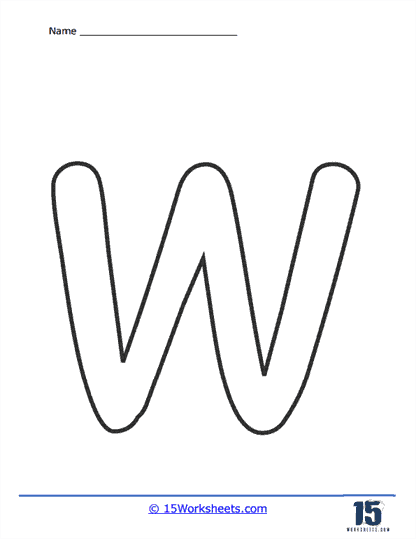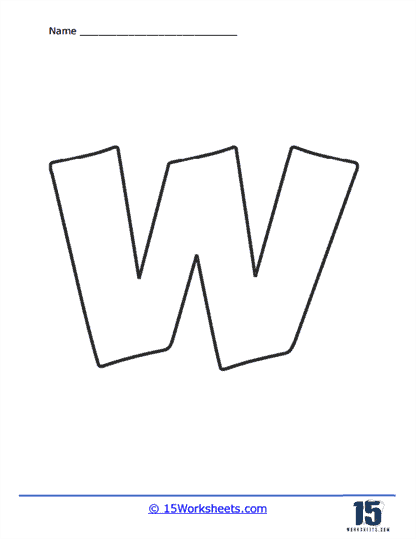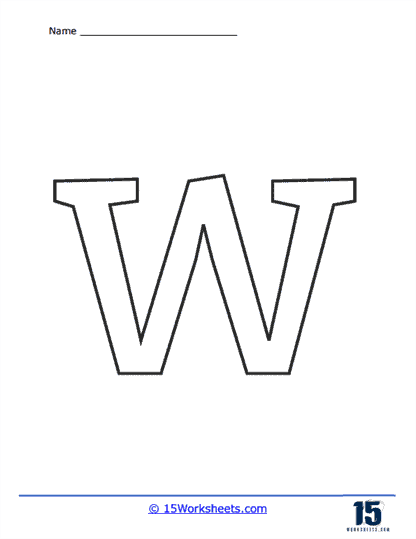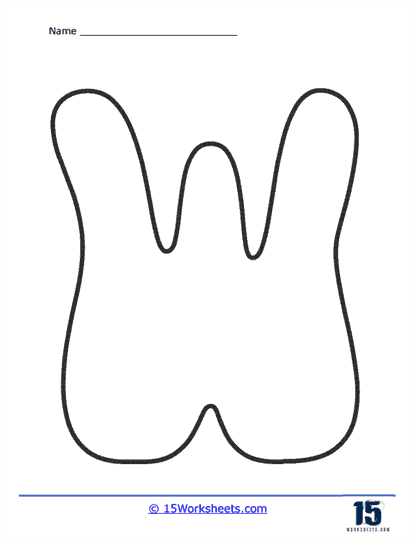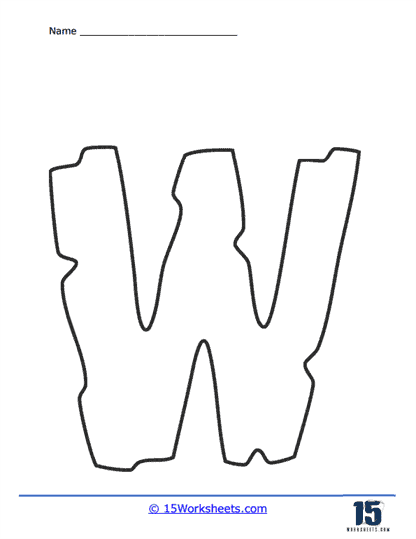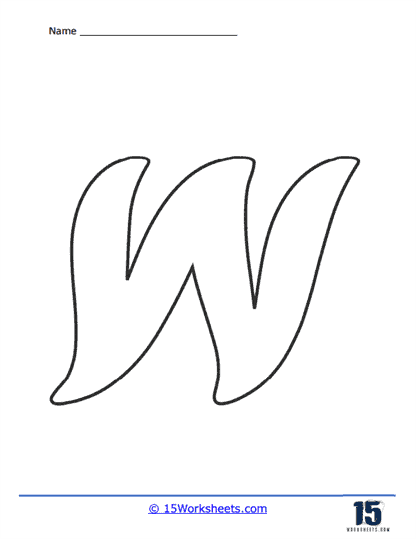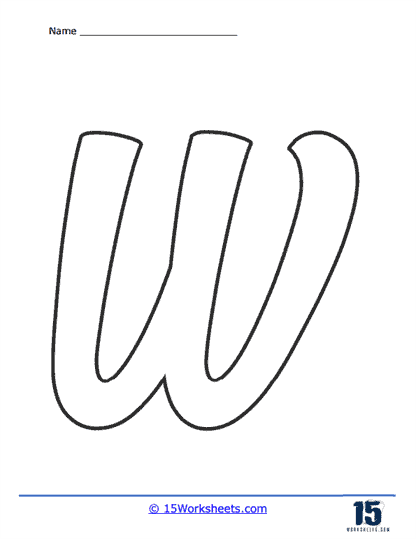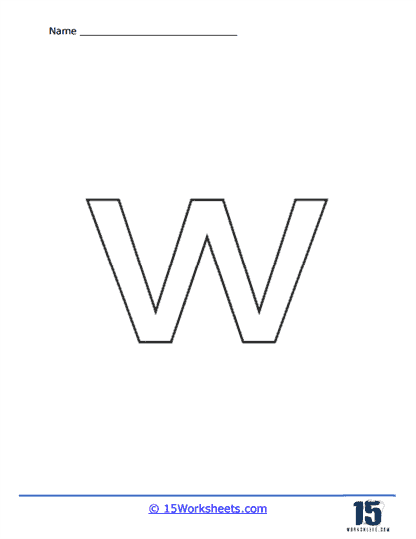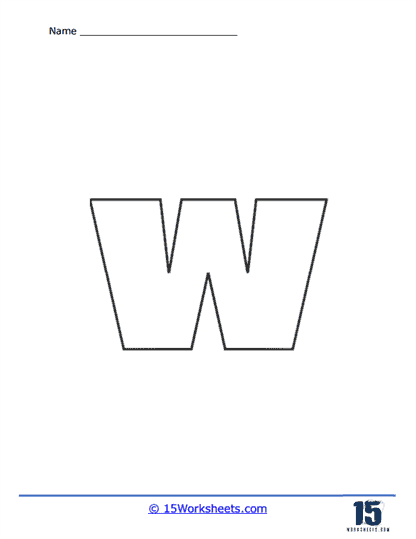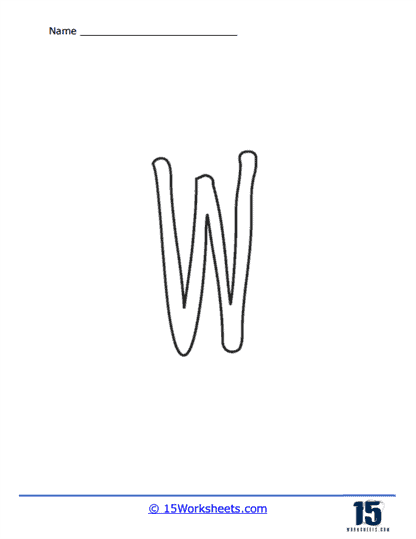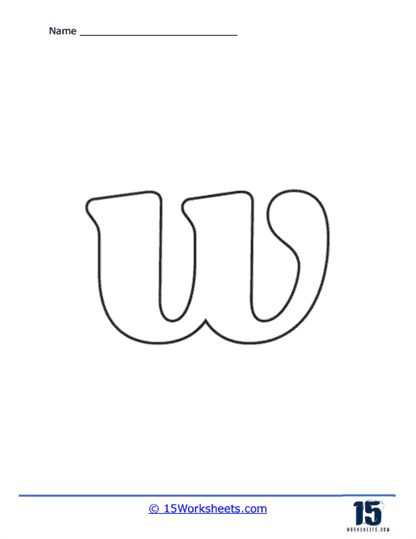Bubble Letter W Worksheets
About These 15 Worksheets
While the letter W, with its unique zigzags, might initially seem daunting, these Bubble Letter W worksheets illuminate the path to mastery. These sheets, with their multifaceted approach encompassing coloring, tracing, and vocabulary, offer a comprehensive strategy for letter recognition and formation. Challenges, though to be expected in the learning journey, can be overcome with the right resources and strategies. As students embark on their alphabetic adventure, tools like these ensure they are well-equipped, turning potential pitfalls into platforms for profound learning.
These worksheets can be a powerful tool in your educational arsenal for teachers, facilitating a joyful and interactive approach to learning for students. Serving multiple functions, these worksheets are not just tools for artistic expression but are foundational pillars for laying the groundwork of literacy.
Delving into the intricacies of tracing and coloring bubble letters, particularly the letter W, reveals a plethora of cognitive and physical benefits. Tracing fosters a kinesthetic connection to the letter. As a student’s hand glides over the distinct peaks and valleys of the letter W, they’re not just tracing a shape; they’re engraving the unique structural nuances of the letter into their muscle memory. This physical act solidifies recognition and aids in letter retention. Coloring, in tandem with tracing, intensifies this engagement. As students embellish the bubble letter with hues of their choice, they immerse themselves deeper into the letter’s identity, further strengthening their connection. This hands-on, multisensory approach not only enhances their recognition of the letter W but also refines their motor skills, a crucial aspect of the handwriting journey.
Incorporating vocabulary into Bubble Letter W worksheets accentuates their educational value. Words like “whale,” “wagon,” “wind,” and “watermelon” can be seamlessly woven into these sheets. By coupling the letter W with relevant illustrations and corresponding words, students are offered a dual pathway to reinforce their understanding. They don’t just see the letter in isolation but perceive it in context, associating the visual form with specific sounds and meanings. This holistic approach not only fortifies letter recognition but also sets the stage for vocabulary expansion and phonetic understanding.
Yet, the letter W, with its seemingly intricate structure, can be a challenging contender for young learners. But what makes the W so wily? Unlike other letters with straightforward linear or rounded strokes, W demands a repeated up-and-down motion. Both the upper-case W and its lower-case counterpart “w” have this zigzag pattern. The challenge lies in maintaining consistent angles and ensuring that the peaks and troughs of the letter are symmetrical. The motion, especially for fledgling writers, requires coordination and control to ensure the letter doesn’t end up too wide, uneven, or skewed.



